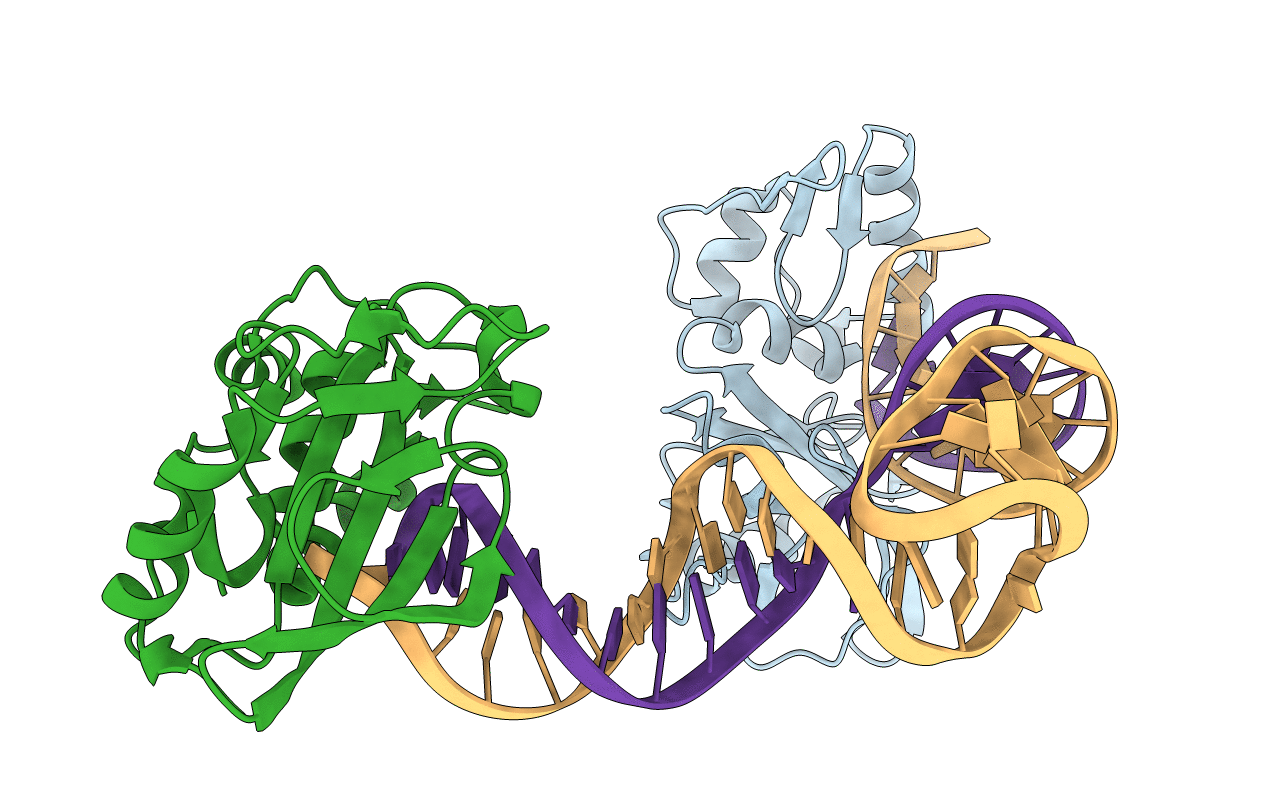
Deposition Date
2017-05-13
Release Date
2018-01-24
Last Version Date
2023-11-22
Entry Detail
PDB ID:
5XMA
Keywords:
Title:
Crystal structure of AsfvPolX in complex with DNA enzyme at P43212 space group
Biological Source:
Source Organism:
African swine fever virus (strain Badajoz 1971 Vero-adapted) (Taxon ID: 10498)
synthetic construct (Taxon ID: 32630)
synthetic construct (Taxon ID: 32630)
Host Organism:
Method Details:
Experimental Method:
Resolution:
3.80 Å
R-Value Free:
0.28
R-Value Work:
0.25
R-Value Observed:
0.25
Space Group:
P 43 21 2


